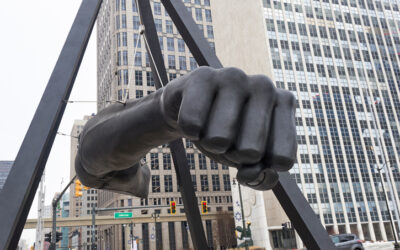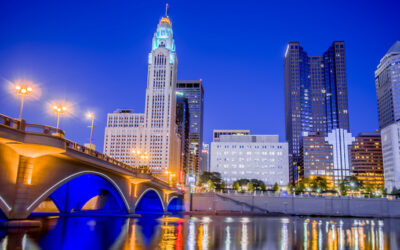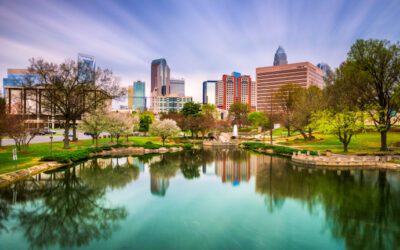As you are preparing to move to Indy, if the culture of a big city with the speed and friendliness of a small town sounds appealing, this is your new homebase.
With a population of a little under a million, Indianapolis is usually known as a medical town. While the medical field is still one of the biggest job sectors, Indy and outlying cities are taking off in a tech boom making it a draw for young urban professionals and families. Whatever your reason for coming, here are a few things you should keep in mind before you tape up the last box.
1. Get your bike ready.
Indianapolis, though near no mountains or large bodies of water, has an advantage of flat land. This is one of the best assets if you are a bicycle enthusiast; flat roads mean long distances and easier rides especially if you are a new cyclist. There are three primary trails (the Monon, Pogue’s Run and the Cultural Trail) running through downtown, out to the east reaching neighborhood of Irvington, and north to suburban Carmel.
2. Step up your craft beer game.
No really, coming to Indy means that you better know your hop profiles or at least pick a favorite brewery and attend at tap takeover at your neighborhood dive bar. Indianapolis’ beer scene started with Indianapolis Brewing Company in 1889 — Kurt Vonnegut’s Jr.’s grandfather was one of the presidents — and eventually re-boomed with the
Broad Ripple Brewpub. Now there are over 135 breweries in Indiana, and they generate somewhere around $1 billion in economic impact.
Sun King is the largest and most well known craft brewery, but make sure and check out small gems like
Black Acre and
Scarlet Lane.
3. Get your oil changed
One huge plus to living in Indy is how close it is to weekend destinations. It may sound cliche, but this isn’t called the Crossroads of America for no reason. Indy is roughly a 2-3 hour drive from Chicago, Michigan, Cincinnati, Louisville and Detroit. Not to mention the amazing hiking in Brown County, which is only about an hour south of Indy.
4. Get an appreciation for sports.
The heartbeat of Indianapolis really does line up with the final seconds of a buzzer. Indiana is known throughout the country for high school basketball from the movie Hoosiers (which is based on a true Indiana story), but basketball fandom doesn’t stop at the high school level. The NCAA national headquarters is located downtown. The Natatorium, one of the fastest pools in the country, brings Olympic swimmers to train at Indiana University Purdue University. Sports in Indy reach a very loud pinnacle on the west side during the Indy 500, bringing in over 250,000 visitors in one weekend.
Indianapolis is a very inexpensive place to live when compared to either coast or even neighboring Midwestern cities. It’s been reported that Indy residents need to make a little over $46,000 a year to live comfortably. Not bad when you think about the fact that Forbes found that the median income in Indy is $54,939. It might not seem like a lot to some, but it goes far here.
6. It’s a cultural bubble
First Fridays are one day a month that nearly every art gallery is open for free. The art hub of the city, Fountain Square, is your best starting point. Music venues are open for free with local bands playing on rotation. The art world in Indy is where you will find most of the culture, whether that’s one of the dozens of spoken word nights at a local pub or at a 5×5 competition where artists compete with Ted Talk style presentations for grant funding to kickstart their latest project.
7. Start your business here
Starting a business is risky anywhere, but what makes Circle City stand out is the networking. It’s easy to find a co-working space filled with designers, tech gurus and writers. An insider tip is contacting the local business bureau; they are friendly and will help you make that side passion project a reality.
8. Find the hidden historical gems
It might come as a surprise that there are more war memorials in Indy than almost any other city — Washington D.C. excluded. One of the real treasures of Indy is the thriving music and literary history. Modern authors like John Green and Dan Wakefield call Indianapolis home and so did some of America’s legendary writers of the twentieth century like Kurt Vonnegut, Mari Evans and Booth Tarkington. Indy also has an eerie haunted history with attractions like the Hannah House and the Irvington haunted homes tours.
9. Lace up your running shoes
Remember how we said Indy is great for biking because it’s fairly flat? The same goes for running. The city’s bike paths are perfect for runners. If the challenge of trail running is something that peaks your interest, then the two state parks that are on the outskirts of Indy will be your new hangout. Indianapolis is also known for the 500 Festival Mini Marathon. The half marathon race goes through the famous Speedway track and is one of the largest half marathon races in the nation.
10. Buy real estate now
While the housing market in Indy has finally started to slow down a bit, development is literally bursting at the seams. Housing in areas like Fountain Square and Bates Hendricks are steadily getting more expensive. (Just a few years ago $70,000 bought a nice sized two bedroom house. Today that house is probably selling for nearly $200,000.)
11. Choose your neighborhood wisely
Speaking of buying a house, one thing that will make or break your time in Indy is
what neighborhood you choose to call home. Like
Chicago, each one has a distinct identity. Broad Ripple and So Bro are quiet neighborhoods that are great if you have kids. Bates Hendricks, Fountain Square and Garfield Park are known for bright colored bungalows with easy access to downtown, art, and one of the largest parks in the city. Northern suburbs like Carmel, Fishers and Zionsville are family centered and have excellent schools. Holy Cross and the near eastside are rapidly gentrifying and drawing in young professionals. Downtown luxury apartment living is known for modern design and their amenities.
12. Take the ride shares
Indianapolis is now home to Blue Indy, a car rideshare program that makes giving up your car pretty easy. There are stations all over the city and most are relatively close to nearly every neighborhood you will want to visit.
13. Bring the kiddos
The Midwest in general is known for hospitality and family friendly environments. Indy is the pinnacle of that. There are inexpensive museums scattered throughout downtown that make for a perfect day out. The Indianapolis Children’s Museum is one of the largest in the country. Just look for the giant dinosaurs out front. When it comes to schools, the International School and several charter schools are known for specialized education and can set kids up for a jump on colleges. Indianapolis Public Schools are undergoing an overhaul in redistricting right now, but one of the great things about IPS is the boost in arts education. Indy was chosen to be an Any Given Child city, meaning a $125,000 national grant toolbox was given to help find out where arts education in IPS schools is falling short and what to do about it.
14. Make use of the highway (even in town)
If you have a car, a huge plus to Indy is the highway system. Interstate 465 makes a beltway around the heart of the city and I-65 and I-70 crisscross through downtown. The result is it only takes about 15 minutes to get anywhere that you need to go as long as it isn’t rush hour. Even then, traffic in Indianapolis usually only ads about 20 minutes to your commute.
15. Mass transit is on it’s way up
While Indy doesn’t have a strong transit system right now, residents voted in favor of boosting it during the 2016 election. The current plan is to create a raid transit line from the north side of Indy to downtown. Eventually, proponents hope to have a light rail installed. As for now, the downtown bus hub received a makeover to centralize the existing routes.
16. Try the booming food scene
This isn’t just internal hype, James Beard and more recognize Indy’s chiefs as up and coming. Bon Appetit laudes the dishes at
Milktooth. However, don’t get near sighted. Indy’s first all plant-based brick and mortar is opening this fall in Fountain Square called
Three Carrots.
Bluebeard, named for the Kurt Vonnegut novel, is fine dining with (almost) all local ingredients that doesn’t require a jacket and tie. Gastropub mets craft brew with neighborhood spots like
Twenty Tap and
Shoefly Public House. An old house along the Monon trail brings classic Italian dishes to a perfect date setting at Momma Carolas.
17. Give back
Indianapolis runs on it’s small town vibe in a big city. Caring for one’s neighbor isn’t lost on residents here. As evident by one of the largest local music festivals benefiting Second Helpings, a non profit that distributes food to the homeless and food insecure. No matter what social issue you are passionate about there’s a group in Indy who is eager to take on volunteers.
18. There’s a housing crisis
One thing you will notice about Indy’s less traveled areas is the blight. Several years ago a statistic was released that there were more empty houses than homeless people in Indy. A few art groups are working to change blight in Indy. The House Life project turns abandoned homes into gallery and studio spaces while Big Car Collaborative bought around a dozen empty houses and is in the process of making them into artist-in-resident homes. Blight can be a deep seeded urban problem, but if you are a house flipper Indy is your gold mine.
19. Find your urban farmstead
Naptown is a cultural and urban hub but has a deep connection to its place in farmland Indiana, mainly through food. The surge of “farm to table” dining is not a passing fad here. Dozens of restaurants make a point to show that the bulk of their menus are using locally sourced and sustainably grown ingredients. Indianapolis has hundreds of green spaces around the city and many are being turned into urban farms. It’s not uncommon to be two miles away from the Soldiers and Sailors Monument in the heart of downtown and see neighbors who have backyard chickens, a beehive or a small plot of crops grown next to bustling streets.
20. Know what you want
It might sound simple, but know what you want to get out of living in Indy. This city is easy to afford, easy to network and even switch careers. The Circle City is often a yes-town, if you have a great idea or want to make a life change there are plenty of people and resources to make it happen. Indy can be anything you want it to be.


